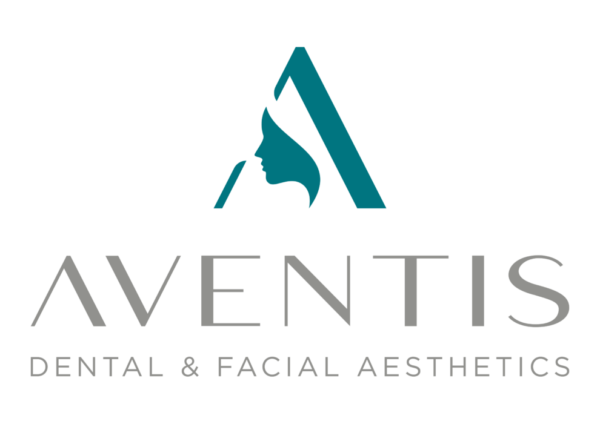Invisalign treatment has gained popularity in recent years as an effective alternative to traditional braces. This innovative orthodontic solution offers numerous benefits that make it an attractive option for both teenagers and adults seeking to straighten their teeth.
What is Invisalign Treatment?
Invisalign treatment involves the use of a series of clear, removable aligners that gradually shift teeth into their desired position. These aligners are custom-made for each patient using advanced 3D computer imaging technology. The treatment is tailored to the patient’s unique dental needs, ensuring a precise and effective outcome.

The Science Behind Invisalign
The science behind Invisalign lies in the controlled application of force. The aligners exert gentle pressure on the teeth, gradually moving them into the desired alignment. This process, known as controlled force orthodontics, is based on the principles of biomechanics. The aligners are designed to specifically target the necessary tooth movements, making the treatment highly efficient.
Biomechanics, a branch of physics that applies the principles of mechanics to biological systems, plays a crucial role in the success of Invisalign treatment. By understanding the forces acting on the teeth and the response of the surrounding tissues, orthodontists can precisely calculate the amount of force required to achieve the desired tooth movement. This scientific approach ensures that Invisalign aligners provide optimal results while maintaining the overall health of the teeth and gums.
The advanced 3D computer imaging technology used in creating the custom aligners allows orthodontists to accurately plan the treatment process. By digitally mapping the patient’s teeth and simulating the desired movements, they can determine the exact number of aligners needed and the duration of the treatment. This level of precision ensures that each aligner is designed to address specific tooth movements, resulting in a gradual and controlled shift towards the desired smile.
The Process of Getting Invisalign
Getting Invisalign involves several steps. Initially, the patient undergoes a thorough examination, including x-rays, impressions, and digital scans of the teeth. This comprehensive assessment allows the orthodontist to evaluate the current state of the patient’s teeth and create a customized treatment plan.
During the examination, the orthodontist takes x-rays to assess the position of the teeth and the underlying bone structure. These x-rays provide valuable information about the health of the teeth roots and help identify any potential issues that may affect the treatment process.
Impressions of the patient’s teeth are taken to create a physical mould of the mouth. This mould allows the orthodontist to study the alignment of the teeth in detail and plan the necessary movements. In recent years, digital scans have become increasingly popular as they offer a more comfortable and accurate way of capturing the shape and position of the teeth.
With these records, a customized treatment plan is created, showcasing the step-by-step movement of the teeth. The orthodontist uses the digital images and models to simulate the progression of the treatment, giving the patient a clear understanding of the expected outcome. This personalized treatment plan serves as a roadmap for the fabrication of the aligners.
The aligners are then manufactured and provided to the patient, who typically wears them for 20-22 hours a day, changing to a new set every one to two weeks. The aligners are designed to be removable, allowing patients to eat, drink, brush, and floss without any restrictions. However, it is important to follow the orthodontist’s instructions regarding the wear and care of the aligners to ensure the best possible results.
Throughout the treatment process, the patient will have regular check-up appointments with the orthodontist to monitor the progress and make any necessary adjustments. These appointments provide an opportunity to address any concerns or questions the patient may have, ensuring a smooth and successful treatment journey.
The Advantages of Invisalign Over Traditional Braces
While both Invisalign and traditional braces can achieve the desired teeth alignment, Invisalign offers several significant advantages.
Comfort and Convenience
Unlike traditional braces, Invisalign aligners are made of smooth plastic, making them more comfortable to wear. The aligners are custom-made to fit snugly over the teeth, ensuring a comfortable fit without any irritation. There are no brackets or wires to irritate the mouth, providing a more pleasant orthodontic experience. Additionally, the aligners can be easily removed for eating, brushing, and flossing. This convenience enhances the patient’s overall experience and allows for better oral hygiene during treatment.
Imagine being able to enjoy your favourite foods without the restrictions imposed by traditional braces. With Invisalign, you can remove the aligners before meals, allowing you to eat anything without worrying about damaging your orthodontic appliances. This freedom and flexibility make Invisalign a popular choice among individuals with active lifestyles.
Aesthetics and Confidence
One of the most notable benefits of Invisalign is its aesthetic appeal. The aligners are virtually invisible, providing a discreet treatment option. Unlike traditional braces, which can draw attention to the mouth, Invisalign allows you to undergo orthodontic treatment without anyone even noticing. This is particularly beneficial for individuals who may feel self-conscious about wearing traditional braces. With Invisalign, patients can smile confidently throughout the entire treatment process, knowing that their aligners are virtually undetectable.
Furthermore, Invisalign aligners are designed to gradually shift your teeth into their desired positions. This means that the transition is often more comfortable and less noticeable compared to the sudden adjustments made with traditional braces. The discreet nature of Invisalign aligners can significantly boost your self-esteem and make the orthodontic journey a positive and empowering experience.
Health Benefits
Proper teeth alignment goes beyond aesthetics; it also contributes to overall oral health. Invisalign aligners can help alleviate various dental issues, such as overcrowding, gaps between teeth, and bite problems. By improving the alignment, patients can experience better oral hygiene, reduce the risk of tooth decay and gum disease, and even alleviate jaw pain associated with misaligned teeth.
When teeth are crowded or overlapping, it becomes challenging to clean them effectively. This can lead to a buildup of plaque and bacteria, increasing the risk of cavities and gum inflammation. Invisalign aligners gradually move the teeth into their ideal positions, creating a more harmonious bite and making it easier to maintain good oral hygiene. Additionally, by addressing bite problems, such as overbites or underbites, Invisalign can help alleviate strain on the jaw joint, reducing the likelihood of temporomandibular joint (TMJ) disorders and associated discomfort.
Furthermore, Invisalign aligners are designed to be smooth and comfortable, minimizing the risk of irritation or damage to the soft tissues of the mouth. This is particularly beneficial for individuals who participate in contact sports or play musical instruments, as there is a reduced risk of oral injuries or discomfort.
The Effectiveness of Invisalign
When considering any orthodontic treatment, it’s essential to evaluate its effectiveness. In the case of Invisalign, both success stories and scientific research demonstrate its efficacy.
But what exactly makes Invisalign such an effective treatment option? Let’s take a closer look at the scientific research that support its effectiveness.
Scientific Research on Invisalign Effectiveness
Scientific studies have also examined the effectiveness of Invisalign. Research has shown that Invisalign can achieve comparable results to traditional braces in treating various dental conditions, including mild to moderate crowding, spacing issues, and certain bite problems. This scientific evidence reinforces the credibility of Invisalign as a reliable orthodontic treatment option.
A study published in the Journal of Clinical Orthodontics compared the outcomes of Invisalign treatment with traditional braces in a group of 100 patients. The results showed that both treatment methods were equally effective in correcting dental misalignments. Furthermore, the study found that patients who underwent Invisalign treatment reported higher levels of satisfaction due to the comfort and convenience of the clear aligners.
Another research study conducted at a renowned dental university evaluated the long-term stability of Invisalign treatment. The findings revealed that the teeth remained well-aligned even years after the completion of the treatment, demonstrating the lasting effectiveness of Invisalign.
In conclusion, the effectiveness of Invisalign is supported by numerous success stories and scientific research. Patients who have undergone Invisalign treatment have experienced significant improvements in their teeth alignment, leading to enhanced confidence and oral health. Additionally, scientific studies have shown that Invisalign can achieve comparable results to traditional braces in treating various dental conditions. With its proven track record, Invisalign continues to be a reliable and effective orthodontic treatment option for individuals seeking a straighter and healthier smile.
The Cost of Invisalign Treatment
Cost is a crucial factor to consider when opting for any dental treatment. While the cost of Invisalign may vary depending on the complexity of the case and geographical location, it is worth exploring the financial aspects.
Comparing Costs: Invisalign vs. Traditional Braces
When comparing costs, it is essential to weigh the benefits of Invisalign against traditional braces. While Invisalign may initially appear more expensive, the added comfort, convenience, and aesthetic appeal can make it a worthwhile investment for many patients.
Financing and Insurance Options for Invisalign
Invisalign providers often offer various financing options to make treatment more affordable. Additionally, some dental insurance plans may cover a portion of the treatment cost. It is advisable to consult with the dental provider and insurance company to explore available options.
Who is a Good Candidate for Invisalign?
Invisalign is a versatile treatment option suitable for a wide range of patients. However, certain factors need to be considered to determine if someone is an ideal candidate.
Age Considerations for Invisalign
Invisalign is suitable for teenagers and adults, including those in their senior years. The treatment is often preferred by adults who may find traditional braces socially challenging. However, it is essential to consult with an orthodontic professional to evaluate the suitability of Invisalign based on the age and specific dental needs.
Dental Conditions that Can Be Treated with Invisalign
Invisalign is effective in treating various dental conditions, including mild to moderate crowding, spacing issues, and certain bite problems. Dentists or orthodontists can evaluate the specific condition and determine if Invisalign is the appropriate treatment option.
Understanding the benefits of Invisalign treatment is crucial for making informed decisions about orthodontic care. The convenience, comfort, aesthetics, effectiveness, and potential health improvements make Invisalign an appealing option for teeth alignment. By exploring the cost and considering who can benefit from Invisalign, individuals can embark on their journey towards a straighter and healthier smile.
Back to Blog